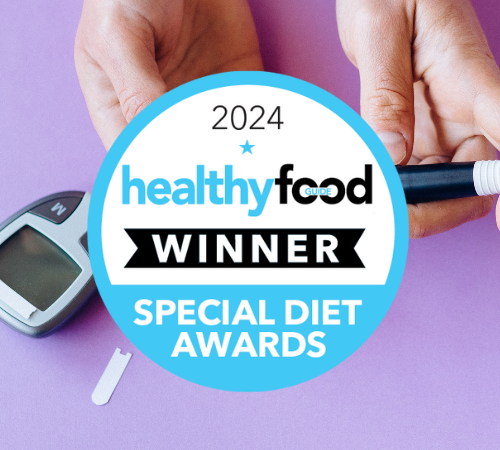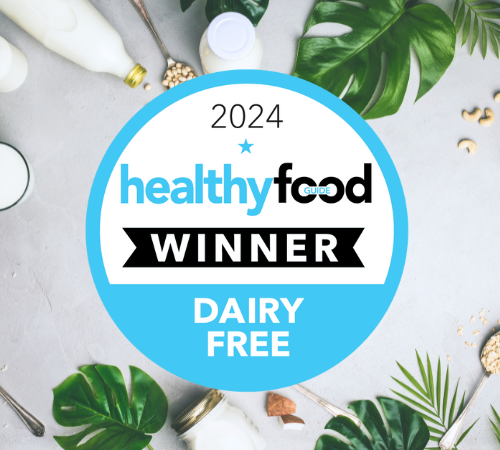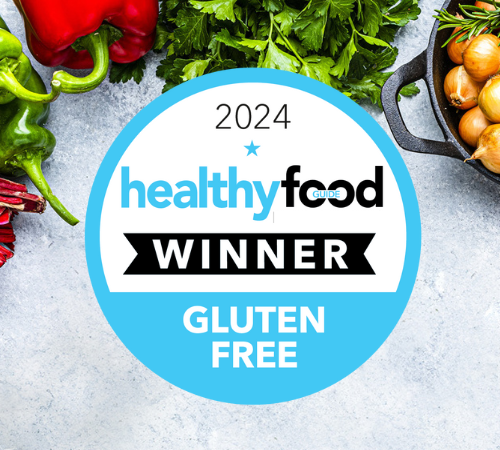
They’re often considered unhealthy, but not all processed foods are created equal — some may even be good for you. Dietitian Brooke Delfino and recipe consultant Phil Mundy reveal nine healthy processed foods to put in your shopping basket.
Making meals from scratch using the freshest, most nutritious ingredients is ideal when it comes to healthy food preparation. In reality, most of us lead busy lives far removed from direct food sources, so rely on ingredients we can store in the pantry and fridge.
Many of these convenient, processed foods have a bad reputation due to high amounts of salt, sugars and other additives. But if you’re partial to the occasional can of baked beans for breakfast, don’t despair! Claims that all processed foods are unhealthy should be viewed with a grain of salt. Some, in fact, are actually good for us and should be part of our regular dietary intake.
What are processed foods?
Put simply, the term ‘processed’ describes foods that have been changed in some way from their natural state. Canning, freezing, drying and pasteurising are all food processing techniques, so most of what you buy in supermarkets has been processed in some way. Even whole foods are likely to have been processed — fresh fruit and vegetables, nuts, seeds and whole grains may have been washed, trimmed, shelled, husked, ground or wrapped before they end up in your trolley. These processes don’t always mean a food is unhealthy.
When dietitians refer to processed foods, they’re typically referring to food products that have been heavily modified and bear little or no resemblance to their original state. Think store-bought biscuits, chips and lollies, which are shelf-stable and ready to eat. Or pastries, frozen pizzas, readymade meals, soft drinks and ice-creams, which are super-sized and heavily marketed, making them easy to overconsume. These packaged foods tend to have a long list of ingredients and are high in added salt, sugar and fat. They’re also often loaded with kilojoules.
So are all processed foods bad?
Not all processed foods are poor choices. Some need processing to make them safe or suitable for use, such as milk, which is pasteurised to remove harmful bacteria. Frozen fruit and veg have most of their nutrients sealed in with them, while canned produce allows for year-round choice, easy storage and cooking, less waste and lower costs. ‘Processed’ is not the dirty word it’s made out to be, but we can’t ignore the overwhelming research promoting a diet based primarily on whole foods.
Ways to avoid overly-processed foods
1 Read the label
A long list of ingredients full of words you can’t pronounce is a sign that a food is overly processed. Avoid products that list salt or sugar as among the first few ingredients.
2 Shop the perimeter
Supermarket centre aisles are where you’ll find most of the highly processed foods, such as soft drinks, lollies and biscuits. Look beyond these and shop in the end aisles.
3 Raid the freezer
Supermarket freezers stock far more than just frozen pizza and tubs of ice-cream. Choose snap-frozen packs of fruit and vegetables that are often more affordable than fresh.
4 Snack smarter
While a chocolate bar or bag of salty crackers may seem more convenient, snacking on a handful of nuts, a small tub of yoghurt or a refreshing piece of fresh fruit is also quick and easy.
Beneficial processed foods
1 Breakfast cereals
Because of their long shelf life, processed cereals are a pantry staple for most Australians. Avoid choosing high-sugar and high-salt varieties and look for products with a health star rating on the pack. These are often fortified with vitamins and minerals, making them an easy, convenient and high-fibre breakfast option.
2 Bread
Choose wholemeal or wholegrain bread over white bread, as the latter has been refined to contain significantly less fibre than the former. Heavy wholegrain loaves, such as soy–linseed or mixed grain, are your most nutritious choice because they’re rich in fibre and heart-healthy fats, with a lower glycaemic index (GI).
3 Milk and yoghurt
Milk is your premium source of healthy, bone-strengthening calcium, while yoghurt contains gut-friendly probiotics. Most dairy products undergo a process called pasteurisation, which kills any potentially harmful bacteria, and homogenisation, which gives milk its smooth and creamy texture.
4 Microwavable rice and quinoa
These trusty pantry saviours usually have a shelf life of about one year and are a convenient source of starchy carbs. Plenty of wholegrain varieties with added fibre are also now available.
As a rule, try to avoid flavoured varieties as these tend to contain more additives and may also have large amounts of salt. Always check nutrition labels.
5 Packaged cheese
Natural cheese is made from just four ingredients: milk, salt, starter culture and an enzyme. Processed cheese is made from high-quality natural cheese and emulsifiers, which stop the fat from separating when heated. This also helps the cheese maintain its flavour, texture and smoothness. If you’re watching your salt intake, choose a salt-reduced variety.
6 Canned legumes
The sealing and high-pressure cooking of foods in cans lock in the nutrients, making many of them just as good a choice as fresh. Canned legumes also count towards your five daily serves of veggies. Just make sure to buy low-salt varieties.
7 Canned fish
Boost heart-friendly omega-3 fats by having two to three serves a week of oily fish, such as sardines, tuna and salmon. Most plain canned fish varieties have a few extra ingredients added, but some contain added oil or salt, so always check the ingredients list.
8 Readymade meals
Often criticised for being high in fat and salt, and low in fibre, choosing one of the healthier, readymade meal options now available can actually be better for you than skipping a meal or grabbing takeaway. They can also help you get to grips with what a suitable portion size should look like.
9 Frozen fruit and vegetables
Also counting towards your two-and-five-a-day intake, frozen fruit and veggies contain loads of nutrients —often more than fresh produce kept in the fridge for a week. As they’re frozen straight after being harvested, they don’t have any time to lose valuable nutrients, such as vitamin C or folate.
Article sources and references
- American Heart Association. 2017. Can processed foods be part of a healthy diet? Accessed October 2017.https://www.heart.org/en/healthy-living/healthy-eating/eat-smart/nutrition-basics/processed-foods
- Bellatti, A. 2015. Do you know the difference between processed and ULTRA-processed? Accessed October 2017https://eatingrules.com/ultra-processed-food/
- Feren, J. 2016. Not all processed foods are bad for you. Accessed October 2017https://www.heartynutrition.com.au/
- Wolfram, T. 2016. Processed Foods: What’s OK and what to avoid. https://www.eatright.org/food/nutrition/nutrition-facts-and-food-labels/processed-foods-whats-ok-and-what-to-avoid
www.healthyfood.com










